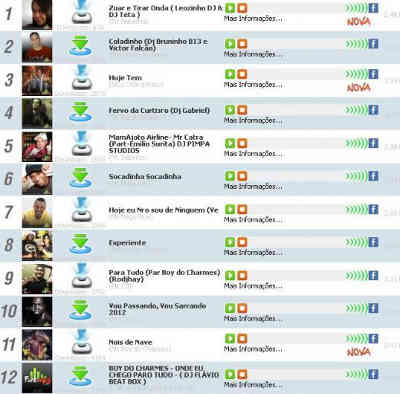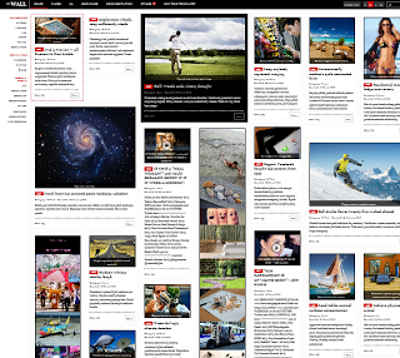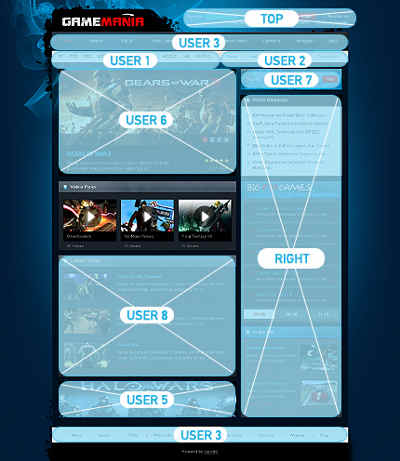Software Extensions.-
Optional installation of these extensions will allow you to have a website with the functionality you want.
Let's suppose your business is a restaurant, then your site can include an extension that allows you to display menus and wine lists (even including images), and send emails with daily menus or menus to the registered users, allow bookings, etc. You may also be interested in including an Events Calendar.
See below some examples of the hundreds of available extensions:
- Dynamic forms generators
- Business or Organizations
- Document management
- Media galleries
- Ecommerce and Shopping carts
- Chats and Forums
- Events calendars
- Newsletters
- Data collection and Reporting tools
- Advertising systems and Banners
- Subscription to services
- etc.

Extensions Types.-
There are five types of extensions:
- Components
- Modules
- Templates
- Plugins
- Languages
Each of these extensions handle specific functionality.
The Software Extensions (which in principle, in view of the web visitor are, Components and Modules) are software developments that integrate with this website to get any functionality imaginable.
Components.-
 Components are the largest and most complex extensions of them all. They can be seen as mini-applications. Most components have two parts: a site part and an administrator part (eg, multimedia gallery or online store).
Components are the largest and most complex extensions of them all. They can be seen as mini-applications. Most components have two parts: a site part and an administrator part (eg, multimedia gallery or online store).
Many of the key features of this web system are provided by default by the use of components such as:
- Contacts
- Content
- News Feeds
- Banners
- Mass Mail
- Polls
A component can manage data, set displays, provide functions, and in general can perform any operation which does not fall under the general functions of the code of the website.
Modules.-
 Modules are more lightweight and flexible extensions used for page rendering. These modules are mostly known as the “boxes” that are arranged around a component, for example: the login module. The footer is a module. Modules are assigned per menu item. So, you can decide to show or hide the logon module depending on which menu item the user is viewing. Sometimes modules are linked to components (e.g. to show a clock, a random image, a currency converter, etc.)
Modules are more lightweight and flexible extensions used for page rendering. These modules are mostly known as the “boxes” that are arranged around a component, for example: the login module. The footer is a module. Modules are assigned per menu item. So, you can decide to show or hide the logon module depending on which menu item the user is viewing. Sometimes modules are linked to components (e.g. to show a clock, a random image, a currency converter, etc.)
Modules are like mini-applets that can be placed anywhere on your site.
Modules can be assigned to module positions which are defined in your Template and in the back-end with the Module Manager and editing the module position settings (for example, "left column" or "right column" ).
Showing the modules.-
Each module is assigned to a module position on your website.
 Newsflash is a module which will display articles from your site in an assignable module position. It can be used and configured to display one category, all categories, or to randomly choose articles to highlight to users. You can display as many items as you have set up and you can show a "Read more" to allow the user to read the full article.
Newsflash is a module which will display articles from your site in an assignable module position. It can be used and configured to display one category, all categories, or to randomly choose articles to highlight to users. You can display as many items as you have set up and you can show a "Read more" to allow the user to read the full article.
The Newsflash module is particularly useful for things like displaying news web or to show the latest articles added to the website
Assigning user levels to the software extensions.-
A part or the whole of the components and modules as well, can be assigned to be visible only by users of a certain level. Thus, the "Public User" may or may not have partial functionality of a component, but if he accesses the private area, as "Registered User", the component may allow more functionality, see modules that are not visible to "Public User", etc.
If we create different levels of access to the private area, we can assign features and modules at an user level, so that one user logging at an determined user level will have functionality for the level below (and perhaps more) and see what the users logging at the lower level can see (and perhaps more), but will not have the functionality assigned to the higher level and will not see the modules assigned to that higher level.
Next we will discuss about the responsive designs of this website.
- See a demo of this site (in Spanish)
- Contract this site (in Spanish)
- Contract this site ALL INCLUDED (Domain registration, Web hosting, CMS Site and Website maintenance (with an excellent discount) (in Spanish)
